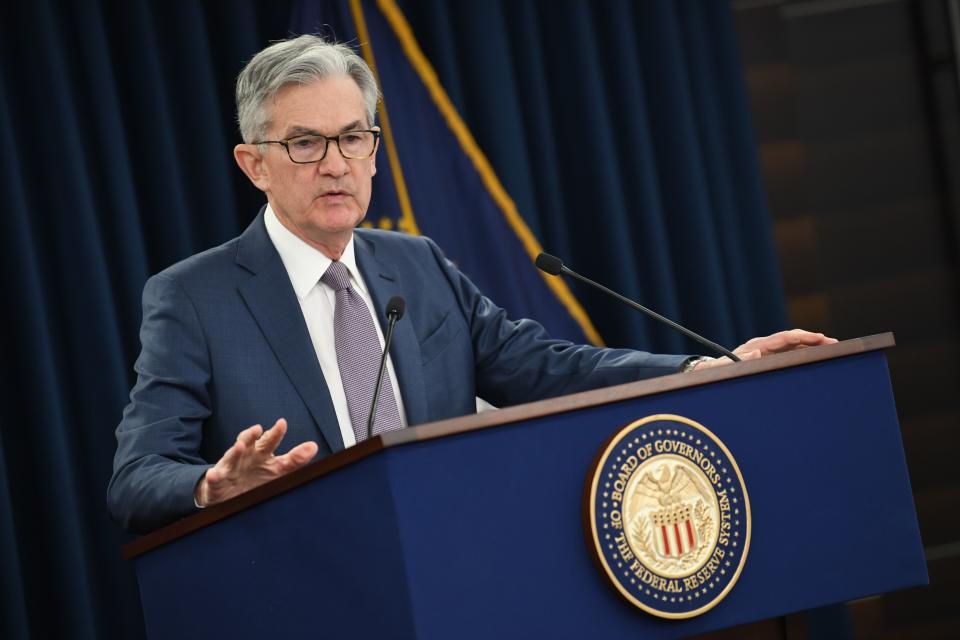The Federal Reserve contributes to inequality: Former FDIC Chair
Sheila Bair, the former head of the FDIC during the financial crisis, said the Federal Reserve contributes to inequality in the U.S. and that monetary policy, which largely helps the wealthy, fails to adequately trickle down to other demographics.
“I think it would be good for the Fed to acknowledge that and try to find better ways to use their tools in a way that doesn’t exacerbate the problem,” Bair said on Yahoo Finance’s On The Move.
Bair was quick to point out the benefits of what the Fed has done in response to the sharp disruption in the economy, but said its inflation of asset prices “doesn’t really trickle down to labor markets.”
After the 2008 financial crisis, Bair said, the U.S. saw a similar narrative in the recovery with stagnant wage growth as the stock market soared. It took 10 years for lower- and middle-income families to see gains, Bair said – and that was “despite low interest rates, not because of it.”
Bair criticized zero interest rate policy as a driver of inequality, something that Fed Chair Jay Powell pushed back on recently, saying that the Federal Reserve’s policies “absolutely” don’t add to inequality, and that the Fed’s response has been to help workers and save jobs.
But with interest rates low, asset prices go up, widening the gap between the people who own assets and those who don’t. Only a slight majority of people in the U.S. own stocks.
The Fed chair may not agree that the Fed contributes to inequality, but former New York Fed President William Dudley does. Recently, he called fighting inequality and rescuing the economy mutually exclusive.
“The Fed's choices: not have a recovery and have less inequality or have a recovery buoying financial asset prices and more inequality,” Dudley said on Bloomberg. “The Fed's tools are just not suited to address the inequality problem.”
The hosts asked whether he was exaggerating the binary nature of the two. “I think it is pretty much that binary,” Dudley said.
How to stimulate the economy fairly
Bair gave the Federal Reserve a lot of credit for acting swiftly, calling the efforts “heroic.” But she said she sees resistance to other ways to get people money.
“If they’re going to heat up the printing press, where is the money going now? It’s going into financial markets, benefitting banks and large corporations that use the bond markets to fund themselves,” said Bair.
The Fed is “trying to get it out,” said Bair, “but the tools that they have now just are not equipped to get it down to Main Street in my view.”
“If they’re going to print money, print it and send it directly to households,” she said.

Congress’s coronavirus legislation through the CARES act sent $1,200 to over 150 million people who qualified. The money was largely sent directly to households via their IRS bank accounts on file that many people use to pay taxes and receive refunds.
But not everyone has payment details and methods, let alone these things on file, making it stimulus distribution far from smooth. Many of the people who needed the money most, the nation’s low-income and underbanked, saw delays. Bair said some sort of digital currency technology should be considered to make sure the money can flow to people, and quickly, to serve its role as an “automatic stabilizer.”
“I think they’re now moving more to trying to understand that technology and how it could give them a better transmission mechanism,” said Bair. “Congress needs to authorize this.”
The financial system needs an overhaul to deal with racial inequality, specifically to black communities
Wealth is already incredibly unequal along racial lines. White family wealth was seven times greater than black family wealth and five times greater than Hispanic wealth in 2016. With this immense racial disparity of asset ownership — stocks, bonds, real estate — using low interest rates as a key economic stimulator has been yet another disadvantage to communities that have faced systematic discrimination in the financial system, like black communities.
Bair, who played a key role during the financial crisis as the head of the FDIC, pointed out that the 2008 financial crisis struck black communities especially hard, as they experienced higher rates of foreclosure.
“Even the ones who could keep their homes have remained underwater much, much longer,” said Bair. “You have seen a net worth plummet for African-American families — it’s actually lower than it was in the early 2000s.”
Today, the coronavirus crisis has struck black communities disproportionately once again.
“Now you are seeing the service workers — that are disproportionately minority, African-American, lower, middle-income — they’re on the front lines of this terrible crisis,” said Bair. “They’re still reeling from the aftermath of the great financial crisis.”
--
Ethan Wolff-Mann is a writer at Yahoo Finance focusing on consumer issues, personal finance, retail, airlines, and more. Follow him on Twitter @ewolffmann.
Overdraft fees have forced the poor out of banks: Former FDIC chair
2021 health insurance rates are coming out despite 'unprecedented uncertainty'
Insurance premiums expected to rise 4% to 6%, before factoring in COVID
High-yield savings banks finally hit by the Fed's coronavirus rate cut
Follow Yahoo Finance on Twitter, Facebook, Instagram, Flipboard, LinkedIn, and YouTube